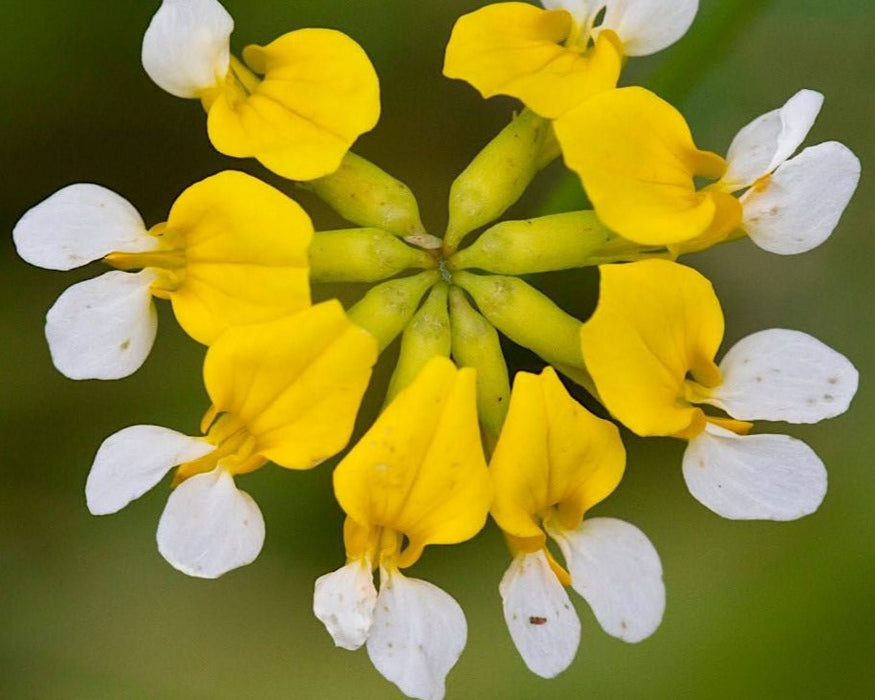
Bog Bird’s Foot Trefoil Seeds (Hosackia pinnata)
An ornate perennial legume, bog bird’s foot trefoil, occurs from British Columbia to California, where it is closely associated with cool and damp sites: low meadows, seasonally wet bogs, stream edges, and shallow soils with sub-surface seeps or springs. That said, with rich soils and a little encouragement this handsome little plant can also adapt well to many upland sites.
From its sprawling form (growing up to about a foot in height), bog bird’s foot trefoil produces showy inflorescences of yellow and white flowers, arranged in complex pinwheels.
Bumble bees are avid flower visitors of this plant, while it is also a possible host plant for the caterpillars of numerous butterflies including the shockingly beautiful western green hairstreak (Callophrys affinis), the very rare Harford’s sulphur (Colias harford), the Persius duskywing (Erynnis persius), the Afranius duskywing (Erynnis afranius), the Northern Blue (Plebejus idas), the Melissa blue (Plebejus melissa), the Acmon blue (Plebejus acmon), and the Funereal duskywing (Erynnis funeralis).
Note that this graceful and extremely showy little plant is probably in decline in numerous places due to habitat degradation and displacement by invasive species. Despite its struggles, bog bird’s foot trefoil grows nicely in rain gardens and bioswales, around downspouts, and in damp drainage ditches. It is tap-rooted and prefers to live in the ground as opposed to containers. Combine it with various rushes in small constructed vernal pools to add an entirely new ecosystem feature to wild backyard gardens.
Approximately 150 to 300 seeds (1.0 grams).

